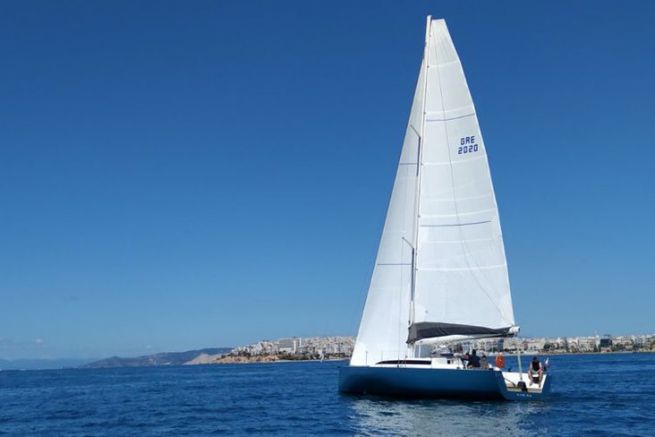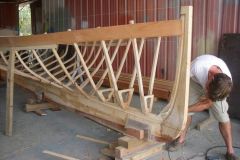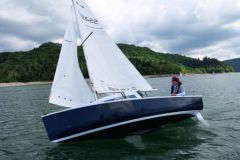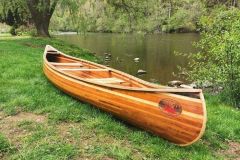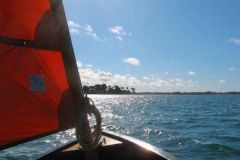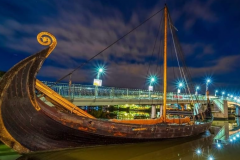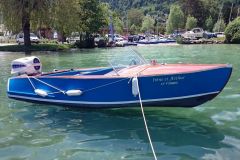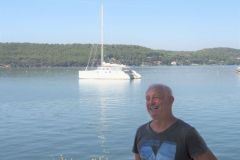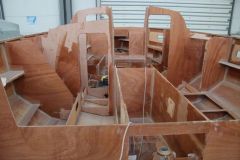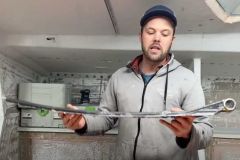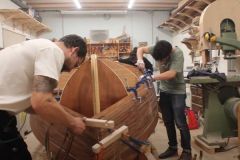There is no question of a refit today, but of a much more ambitious project. Christian is a German who has lived in Greece for over 30 years. This engineer (who studied in France) approaches sailing with windsurfing. Then life takes him away from the sea before he comes back to liveable sailing boats with which he regattas. He loves ocean racing, going fast on the water.
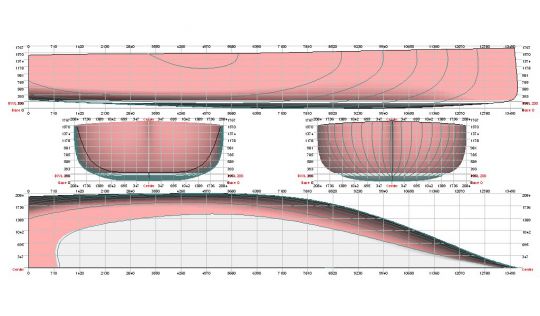
An idea that germinates on a cruise
In 2000, during a holiday with his brother (an aeronautical engineer), he imagined building the boat of their dream. The two of them worked out the specifications of what would be for them the ideal sailboat. Without any limits or restrictions, they define in a few lines this sailboat:
- It must be stable (en route as well as at anchor)
- Quick to play with others in the race
- Offering 3 double cabins with 160 x 200 berths
- A single shower room is sufficient as long as it is large
- The cockpit should be spacious for outdoor living and even allow you to sleep outside
- The kitchen is spacious for preparing meals, but no need for a large saloon as we live outside in the Mediterranean.
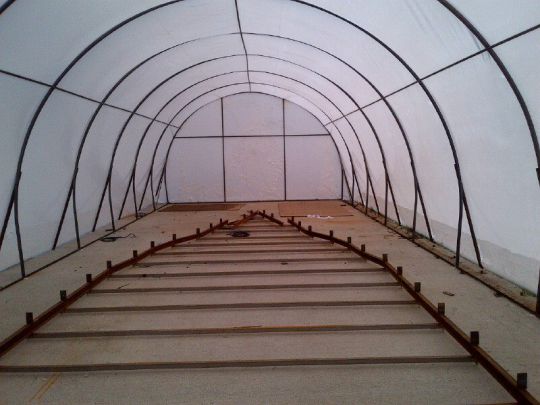
Like an air of IMOCA
In 2000, Christian also discovered the Vendée Globe and became passionate about the course of Elen MacArthur and her IMOCA King Fisher. He began designing his boat, which was strongly inspired by an IMOCA. In order to accommodate the desired fittings, he came to the conclusion that his boat had to be 45 feet long. This will also be sufficient to withstand the violent gales that Greek sailors dread.
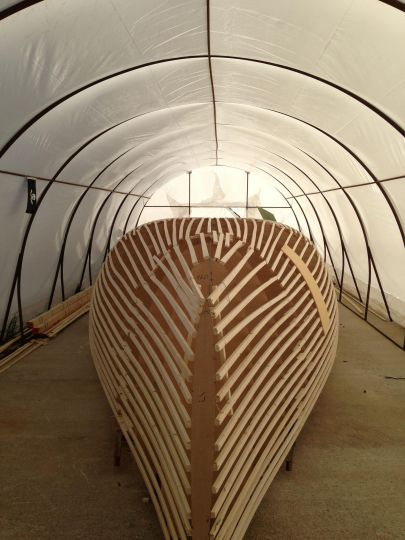
For stiffness to the canvas, without penalising the weight too much, he decided to carry the ballast to 3.70 m below the waterline. But with a clever hydraulic jack system and a conical keel well, he can raise the sabre keel to reduce the draught to 2.20 m. This makes it possible to approach at anchor and practice the harbours of the Greek islands.
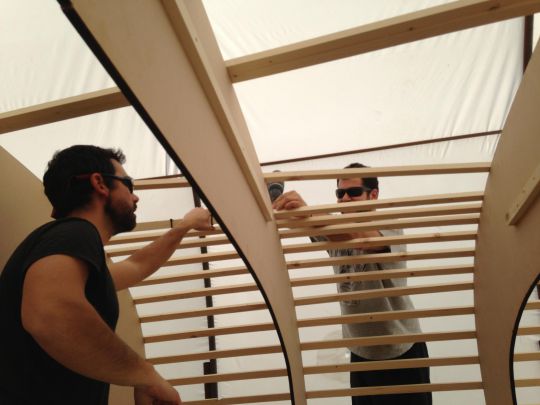
In search of solutions
In 2003, the project still exists in the form of a sketch. Christian is looking for a technical solution to build his sailboat. He would like to build it in carbon, but it is too expensive. He is even thinking of building it in aluminium, but cannot find a yard that is accessible for his finances. So the project is still sleeping.
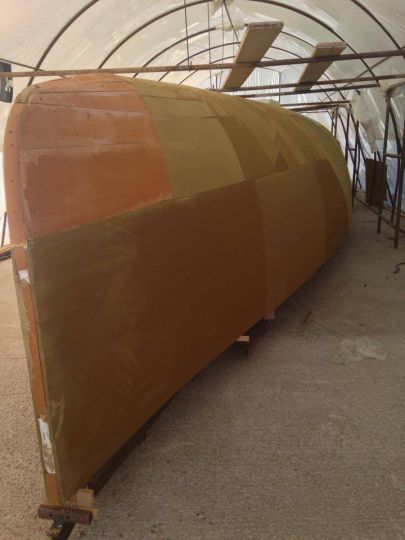
In 2006, Christian ends up buying a Sun Shine 38 (very well equipped) with which he participates in local regattas. But his project is still in the corner of his mind. It is only in 2008 that he relaunched it by starting to look for suppliers for the material to build the hull (fiber, resin...). He researched all over Europe and had quotations drawn up.
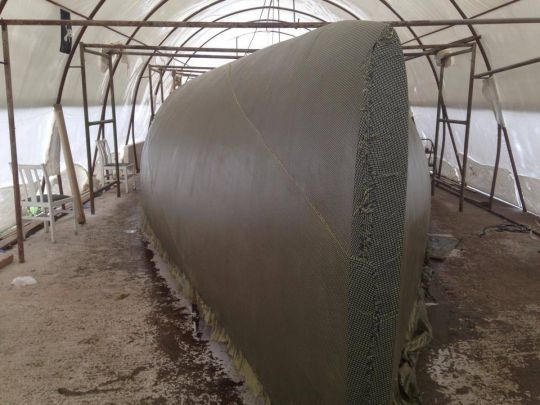
Self-taught naval architect
The problem is, Christian doesn't have a plan for his boat yet. Never mind. He's starting to draw it by hand. But he ends up buying a drawing software (Boat Bulding) and starts training. It will take 1.5 years to master the software, understand the program and draw.
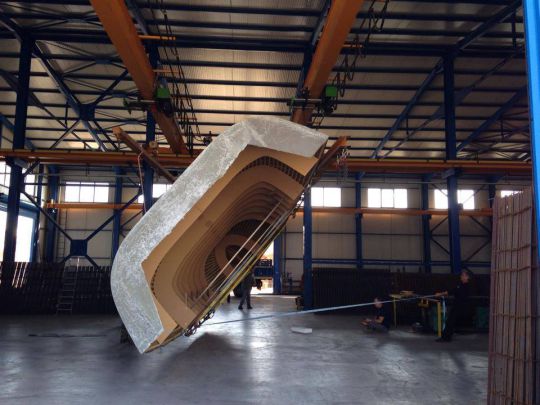
To define his yacht in detail, he uses his experience as a skipper on different supports: Mum 36, TP 52, catamaran... Depending on the wind and sea conditions, he looks at how the boats behave. For example, his experience in windsurfing (in the 80's) had shown him that a concave on the back of the board favours the start in the planning. He will therefore make the same under the hull of his sailboat.
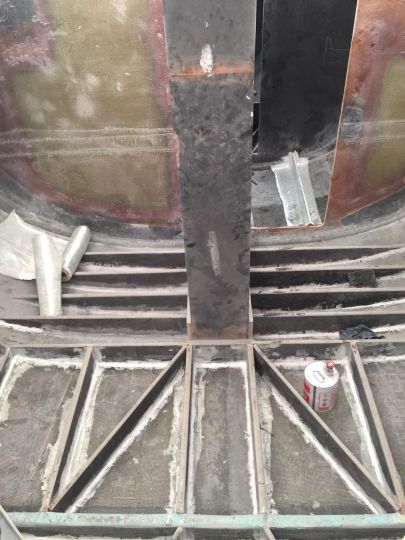
A material supplier that becomes a partner
In 2011, he finished the boat's plans without even having them validated by a naval architect! Then it will be the decisive meeting. Always looking for materials, he will contact Dimitri at Fibermax Composite, a dealer in Northern Greece. Faced with the astonishing demand (Christian asks for a quote for 600 m2 of carbon plus PVC sheets), Dimitri offers to come and talk to him face to face about the project. The next day, Christian arrives on site at 8am. The meeting will end at 10pm without even a lunch break, only with a glass of water!
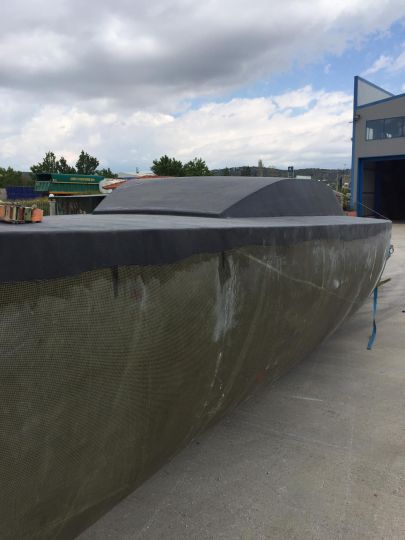
Dimitri isn't just a supplier. He will become a collaborator of the project changing the plans by often proposing better adapted and cheaper solutions. From that moment until the boat was launched (for more than 10 years), he was present on all the stages of the construction. Christian is enormously grateful to him.
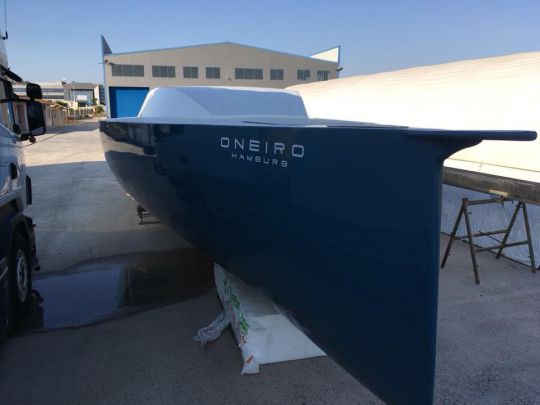
A bunch of friends for the construction
It is on a loaned plot of land that Christian starts construction under a tarpaulin. He gathers a whole team of friends who come regularly to help out. The boat is built on a female wooden dummy. Then the shape is covered with PVC foam before being overcoated with 5 carbon fabrics and Kevlar. For this stage, 14 people come to participate.

Once the hull has been made, it will be returned to a neighbouring company that makes metal parts. Then once the wooden shape is removed, the interior will also receive the 5 layers of Kevlar carbon.
Christian admits that he had a lot of support from all his friends. Every inch of the sailboat was discussed and calculated. He knows how to listen to everyone's remarks and take them into account if necessary.
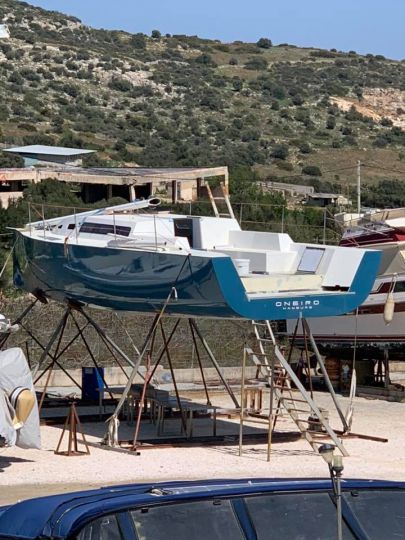
In the end, it is the completion of the keel that will delay the work. Indeed, the hull is ready, but the keel which is made of seamless steel (like a lego) is made by a friend in his company. It's not expensive, but it will be necessary to wait 3 years..
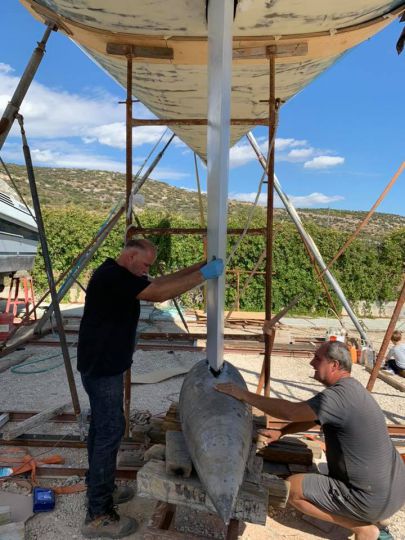
Launching in 2019
During this time Christian pours the lead ballast (2 tons) and advances in the interior fittings. In October 2019, the yacht receives its keel and can be launched. Everyone is happy, but Christian admits to a moment of maximum stress. But the boat just falls right into his lines. A friend has fun measuring the freeboard, which is exactly where it is on the coast of the plans. Christian can rejoice. The boat is mast steered with its carbon mast, also designed and built by Christian. The spreaders (made of composite) are very pushing with an angle of 30°.

An electric propulsion
For the engine, Christian chose an electric propulsion. At the beginning of the project, he would have liked to be able to fit the propeller into the hull (as on the new Dehler 32 OD), but the mechanism was too complex. So he decided to put a motor inside with a belt to reduce the speed of the propeller. Given the low weight of the boat (4.5 tons) and its ability to sail, he decides not to put large batteries. Thus it obtains an autonomy of 2.5 h at 50% of the maximum power (5 N in flat sea).
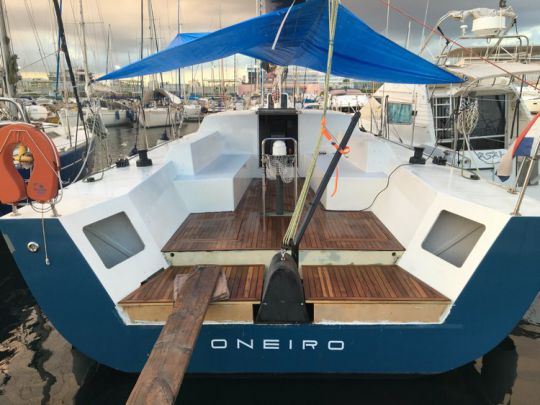
Fast, light and stable
The stability of form even amazes its designer. In this respect, the yacht meets his specifications. The first regatta also shows good performance with 75° upwind with 15 N of wind, but no sea.
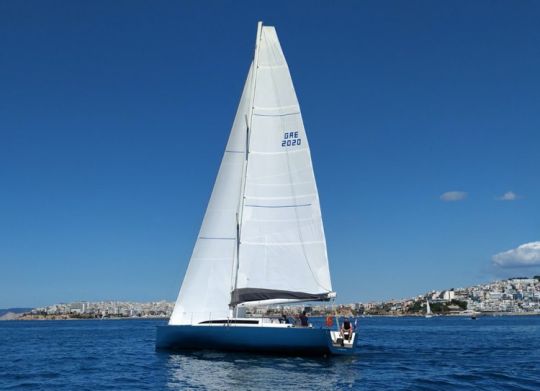
As far as the budget is concerned, Christian estimates that it will cost around 150,000 euros (60 keuros for the hull and the rest in equipment, sails and fittings). A really small budget for a full carbon 45 footer..

Plans for a dream
From now on, Christian wants to make his boat his own for 3 years with regattas and family cruises. Then he hopes to leave for Antarctica. Not to disembark or sail in the ice, just to do a long and long cruise to the South of America, to Cape Horn, his dream..
